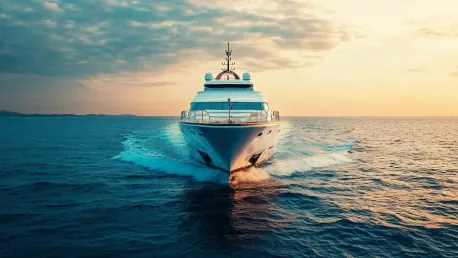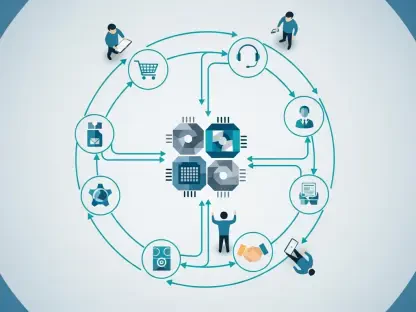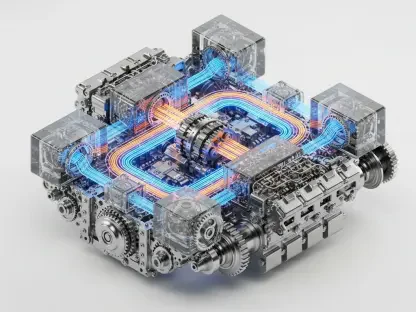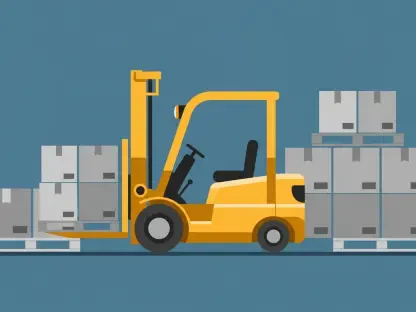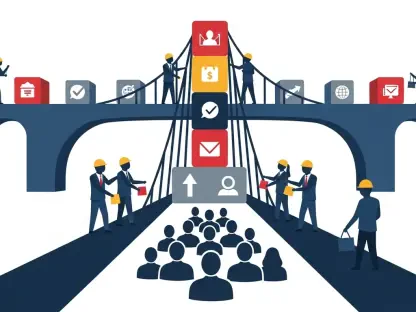The maritime industry stands at the threshold of a technological transformation that promises to elevate efficiency, safety, and sustainability to unprecedented levels. Pioneering advancements across various domains are poised to redefine maritime operations, promising not just incremental improvements but radical changes. Navigating this new landscape requires addressing foundational challenges while harnessing the transformative potential of these innovations. This article delves into the breakthrough technologies reshaping the maritime industry and examines both the exciting possibilities and the obstacles that must be overcome.
Artificial Intelligence (AI) and Emissions Reduction
AI is becoming a game-changer in optimizing maritime operations, particularly in reducing emissions. Mikael Skov of Hafnia emphasizes the crucial role of AI in optimizing route planning and scheduling, thus contributing to significant drops in carbon emissions and aligning with global sustainability targets. By leveraging extensive data analytics, AI facilitates real-time adjustments to navigation routes, helping vessels avoid adverse weather conditions and optimize fuel consumption. Such advancements are not only crucial for achieving lower emissions but also for ensuring more efficient and cost-effective operations.
Industry leaders like Tim Ponath and Arthur English anticipate that AI will be fully integrated into daily vessel operations, enabling seamless coordination among various operational facets. This integration is expected to streamline processes, reduce human error, and enhance decision-making capabilities. However, challenges still loom large. Data standardization remains a pressing issue, as inconsistent and fragmented data can lead to suboptimal AI implementations. Moreover, the increasing reliance on AI raises cybersecurity concerns, necessitating robust measures to protect vital maritime systems from cyber threats. Furthermore, as Niall Jack of Shipnet points out, the industry needs skilled personnel to manage and interpret complex AI-driven systems, highlighting an urgent need for comprehensive training and development programs.
Blockchain and Internet of Things (IoT)
Blockchain technology holds substantial promise in revolutionizing maritime operations by enhancing transparency and efficiency. Mikael Skov envisions blockchain’s widespread adoption in areas such as contracts, payments, and cargo tracking. By providing a tamper-proof, decentralized system, blockchain can significantly reduce fraud and streamline record-keeping processes. This heightened transparency ensures that every transaction is traceable, fostering greater trust among stakeholders and enhancing the overall integrity of the supply chain.
The Internet of Things (IoT) is equally transformative, offering real-time, end-to-end visibility of the supply chain. Sensors and connected devices enable continuous monitoring and data collection, improving the reliability of logistics operations. Real-time data allows for proactive decision-making, ensuring that potential issues are addressed even before they escalate. However, the proliferation of connected devices amplifies cybersecurity risks. With more data being transmitted, the need for stringent cybersecurity measures becomes paramount. Morten Lind-Olsen of Dualog emphasizes the necessity of robust protocols to safeguard sensitive information and prevent breaches, ensuring that the benefits of IoT are not undermined by vulnerabilities.
Proactive Maintenance
The advent of AI-driven proactive maintenance is set to transform how maritime assets are managed. Vikrant Gusain from Dockendale Ship Management advocates for predictive maintenance technologies, including the innovative use of drones. These advancements enable early detection of potential equipment failures, reducing operational downtime and associated costs. By analyzing data from various sensors, AI systems can predict when maintenance activities are required, ensuring timely interventions that enhance safety and efficiency.
Sensor-based emission monitoring systems are also gaining traction, driven by stringent regulatory demands. The EU emissions trading system, for instance, mandates precise monitoring and reporting of emissions, pushing maritime operators to adopt advanced monitoring technologies. These systems provide accurate, real-time data on emissions, enabling operators to stay compliant with regulations while minimizing their environmental footprint. Together, these technologies promise to create a more efficient, safe, and environmentally responsible maritime industry.
Green Technology
Green technology innovations are paramount in the quest for sustainable maritime operations. Ammonia engines and wind assist solutions are at the forefront of these developments. Haakon Lenz of Wilhelmsen Ship Management expresses optimism about dual-fuel ammonia engines. These engines offer significant potential for decarbonization, provided that associated safety concerns are adequately addressed. As these engines become increasingly integrated into the maritime fleet, they promise substantial reductions in greenhouse gas emissions, moving the industry closer to its environmental goals.
Wind assist technology is another promising avenue. Mark Cameron of Ardmore Shipping anticipates that ongoing advancements will yield more accurate data, helping refine its application across various routes and vessel types. Combined with innovations in hull coatings that reduce drag and carbon capture solutions that mitigate emissions, these technologies hold the key to a greener maritime future. Andrew Airey of Highland Maritime predicts that carbon capture systems will become mandatory for vessels utilizing fossil fuels, marking a significant step towards comprehensive emissions reduction.
Crewing and Training
The maritime industry is on the brink of a major technological revolution, set to enhance efficiency, safety, and sustainability like never before. Cutting-edge advancements across different sectors are expected to transform maritime operations, offering not just minor tweaks but significant overhauls. Embracing this new era means tackling core challenges and leveraging the potential of these groundbreaking innovations. This article explores the revolutionary technologies reshaping the maritime field, highlighting the promising opportunities they bring as well as the challenges that need to be addressed. The maritime sector’s transformation is poised to bring about a paradigm shift, necessitating careful navigation through both emergent tools and persistent issues to fully realize the benefits of this techno-evolution. As the industry steps forward, stakeholders must balance the excitement for progress with the practicalities of implementation, ensuring that these advancements result in tangible, positive changes.
